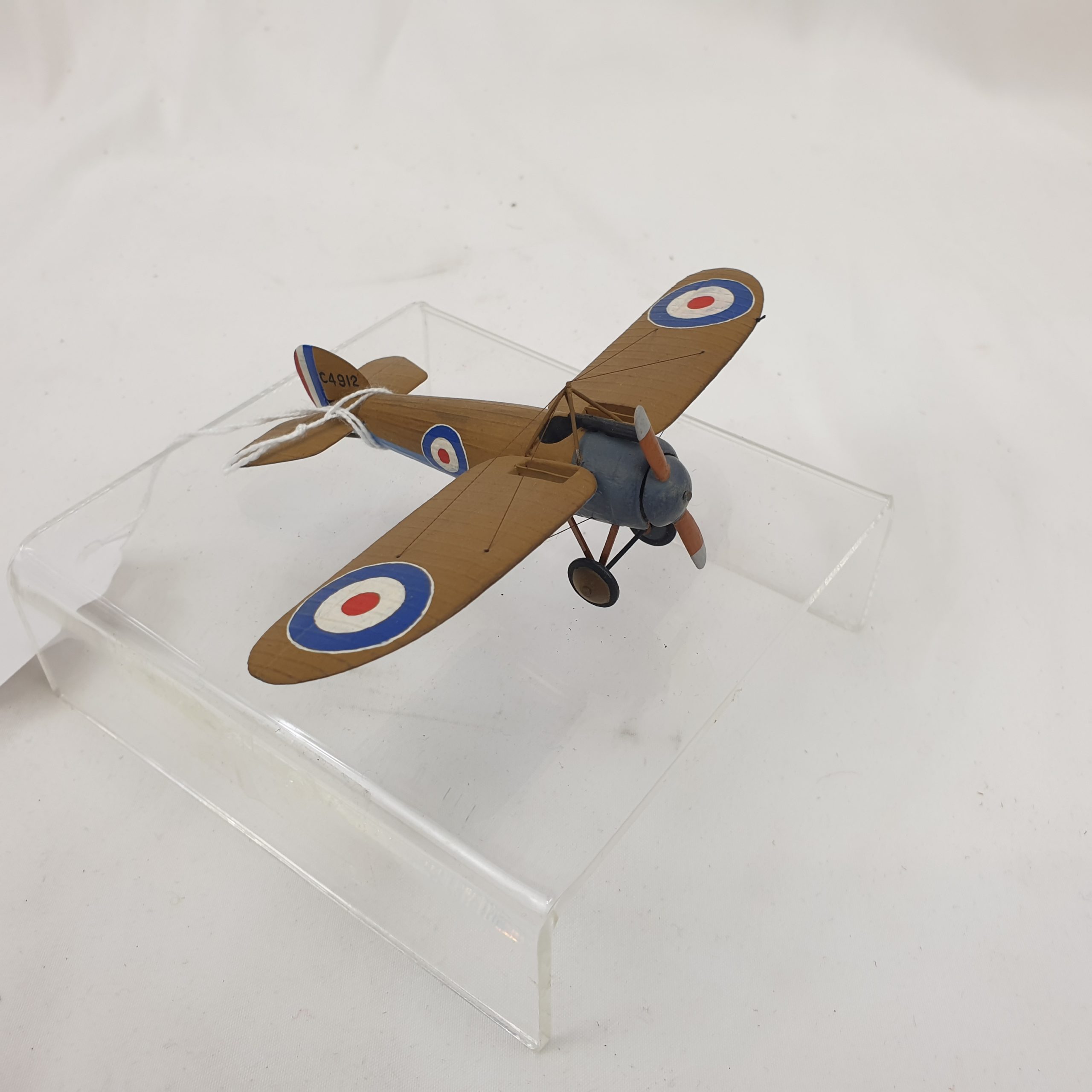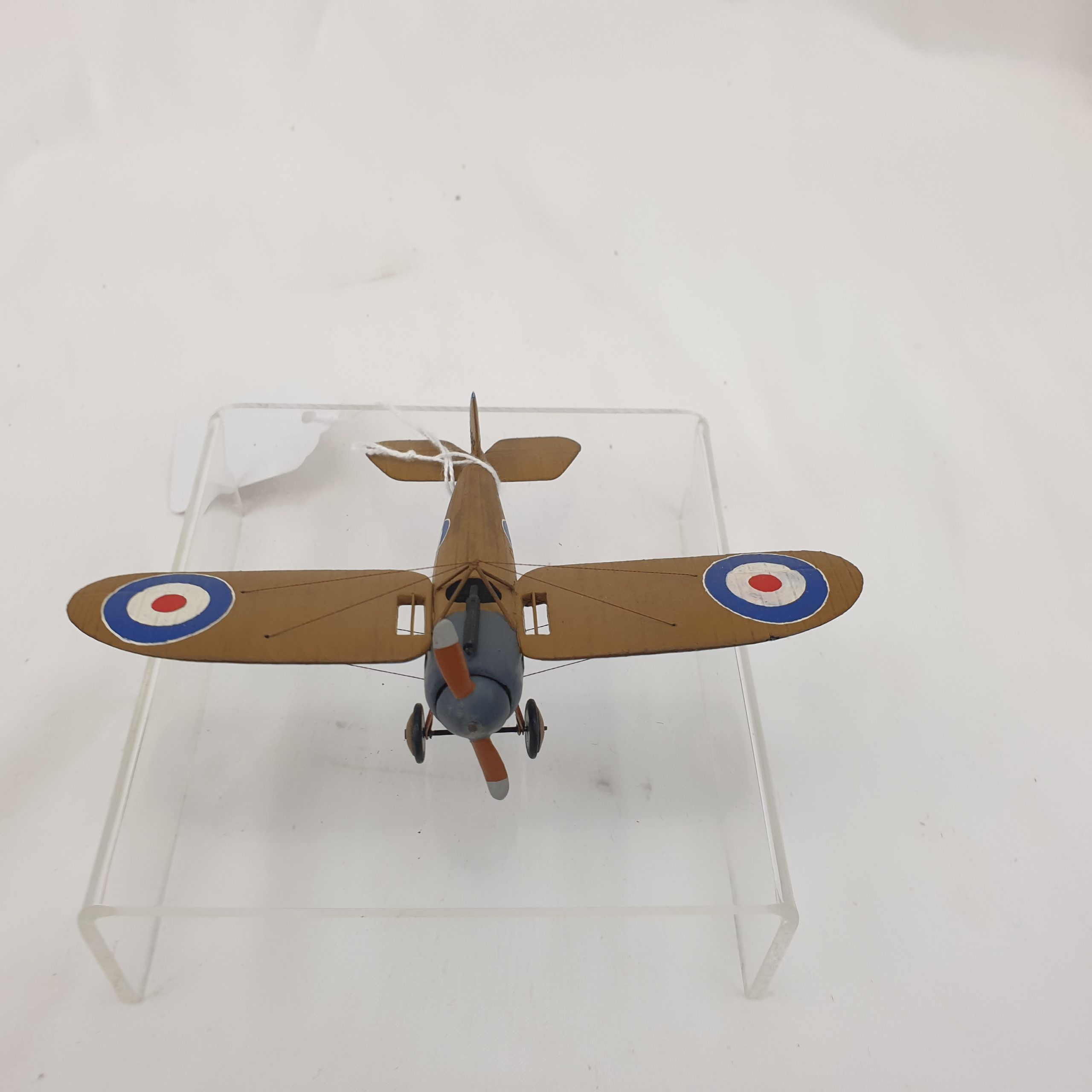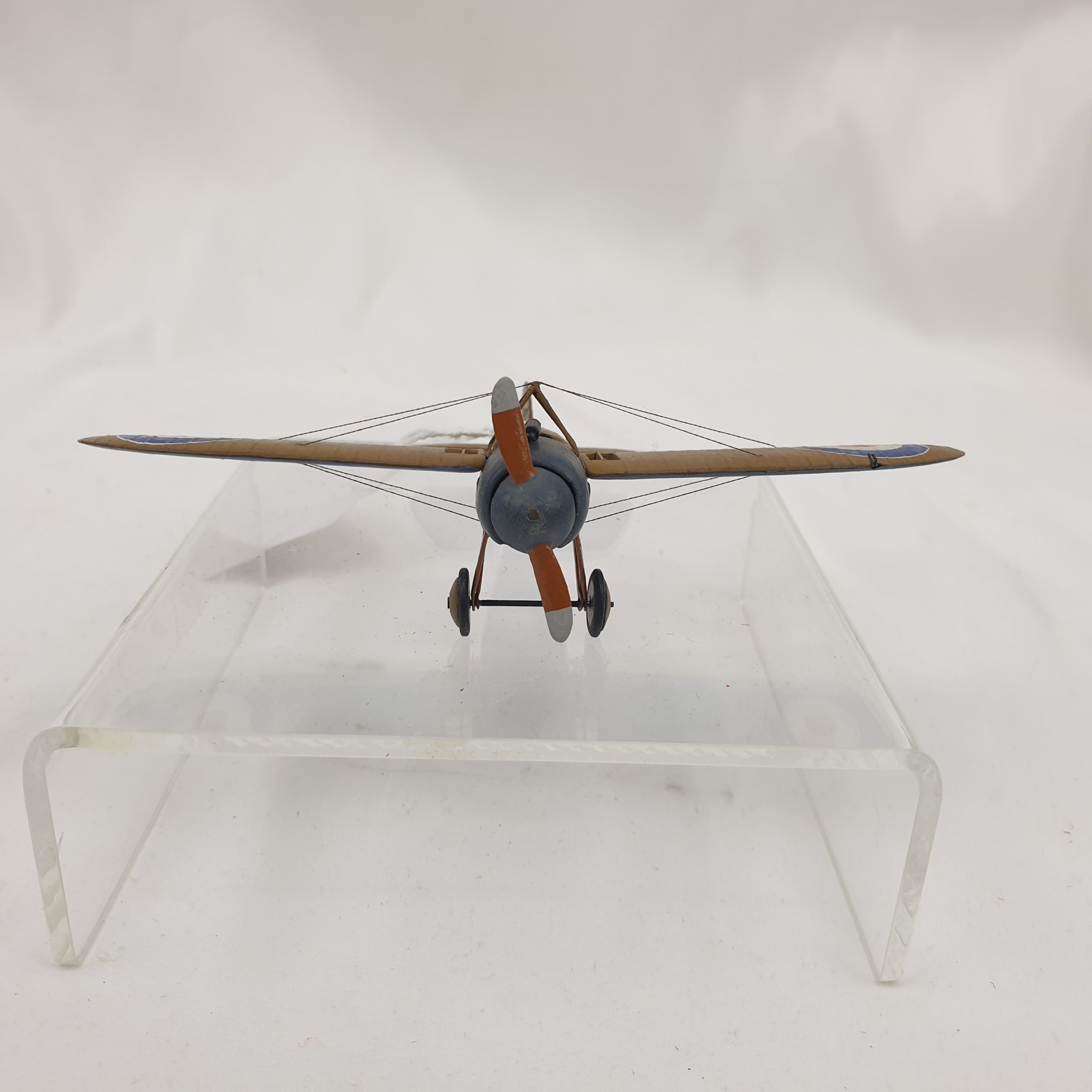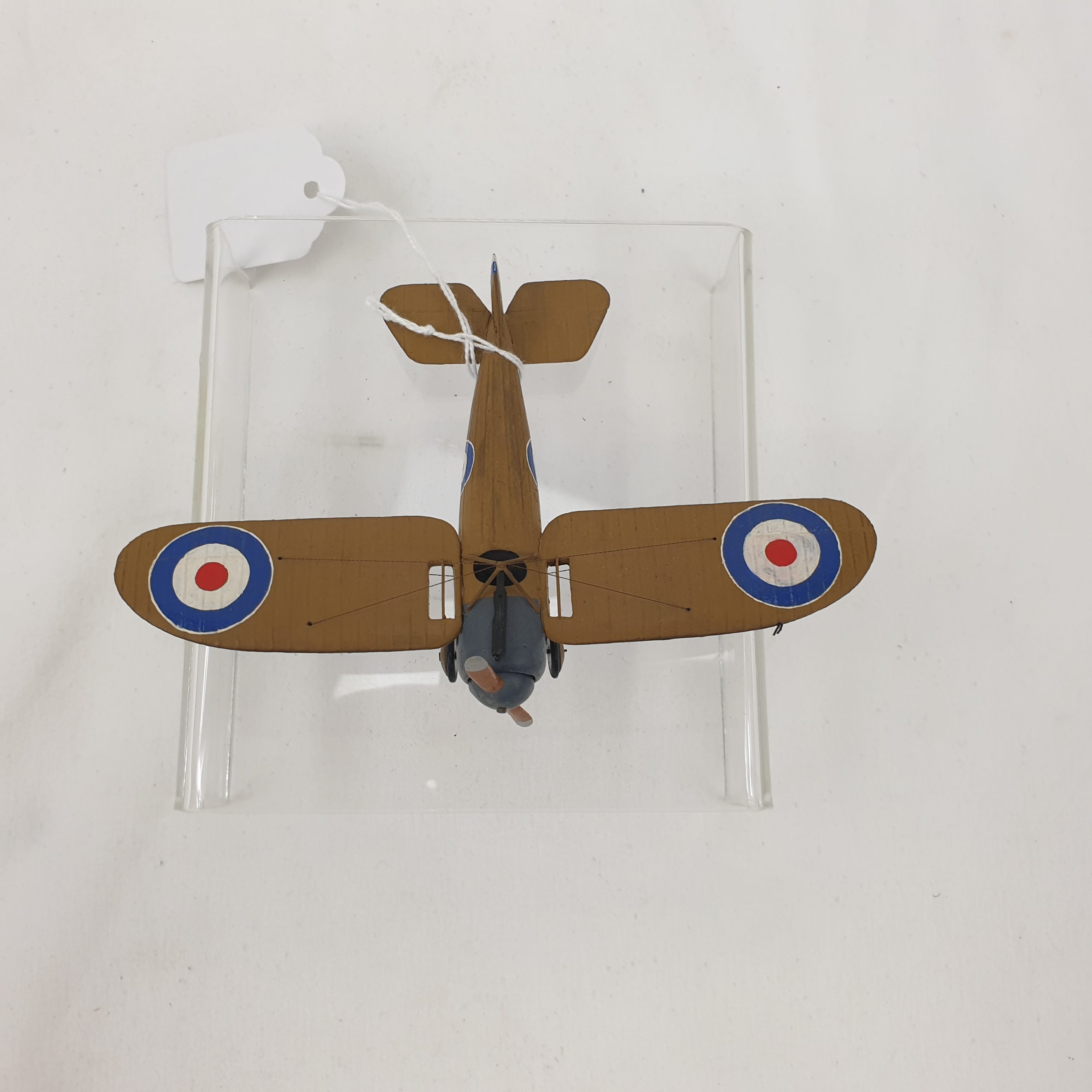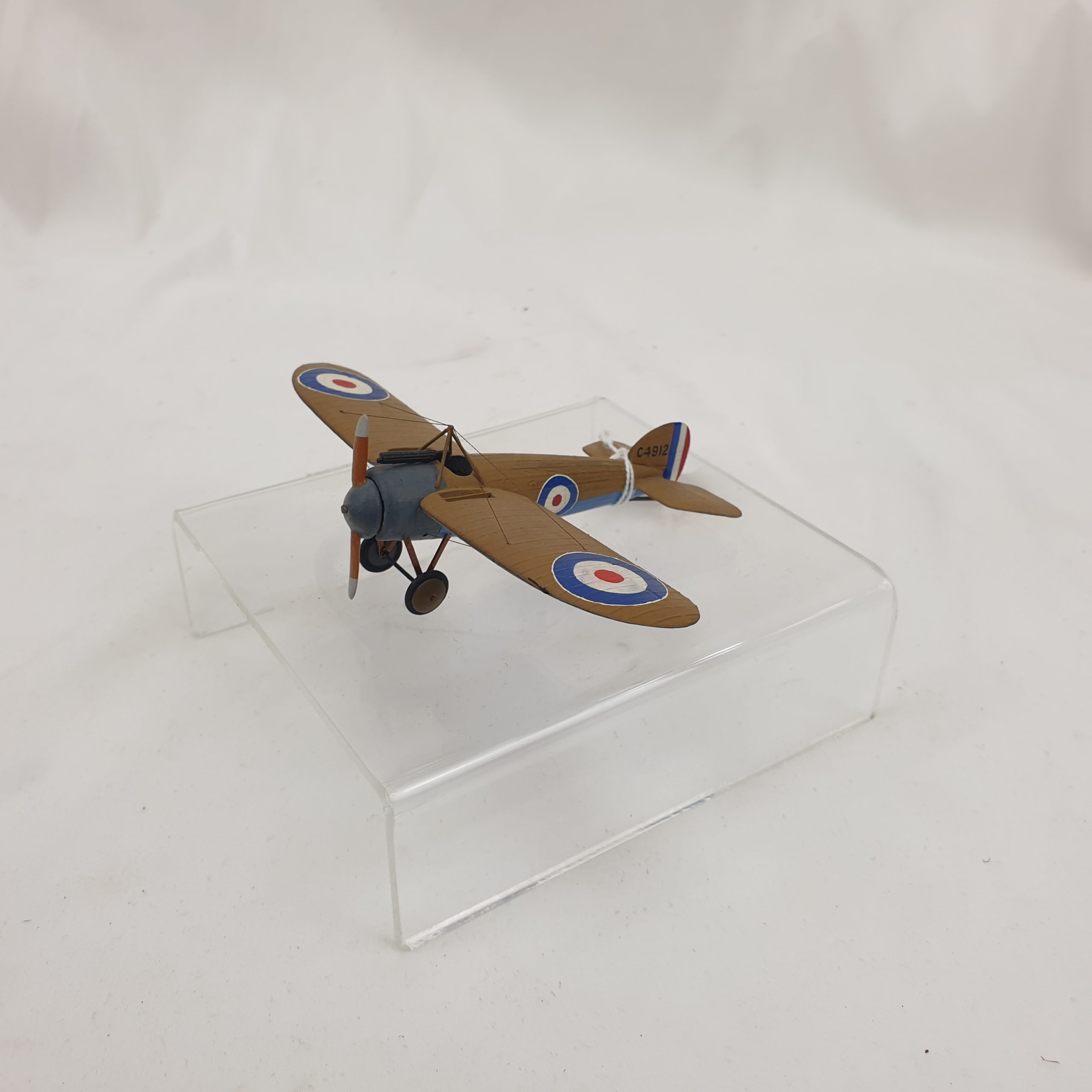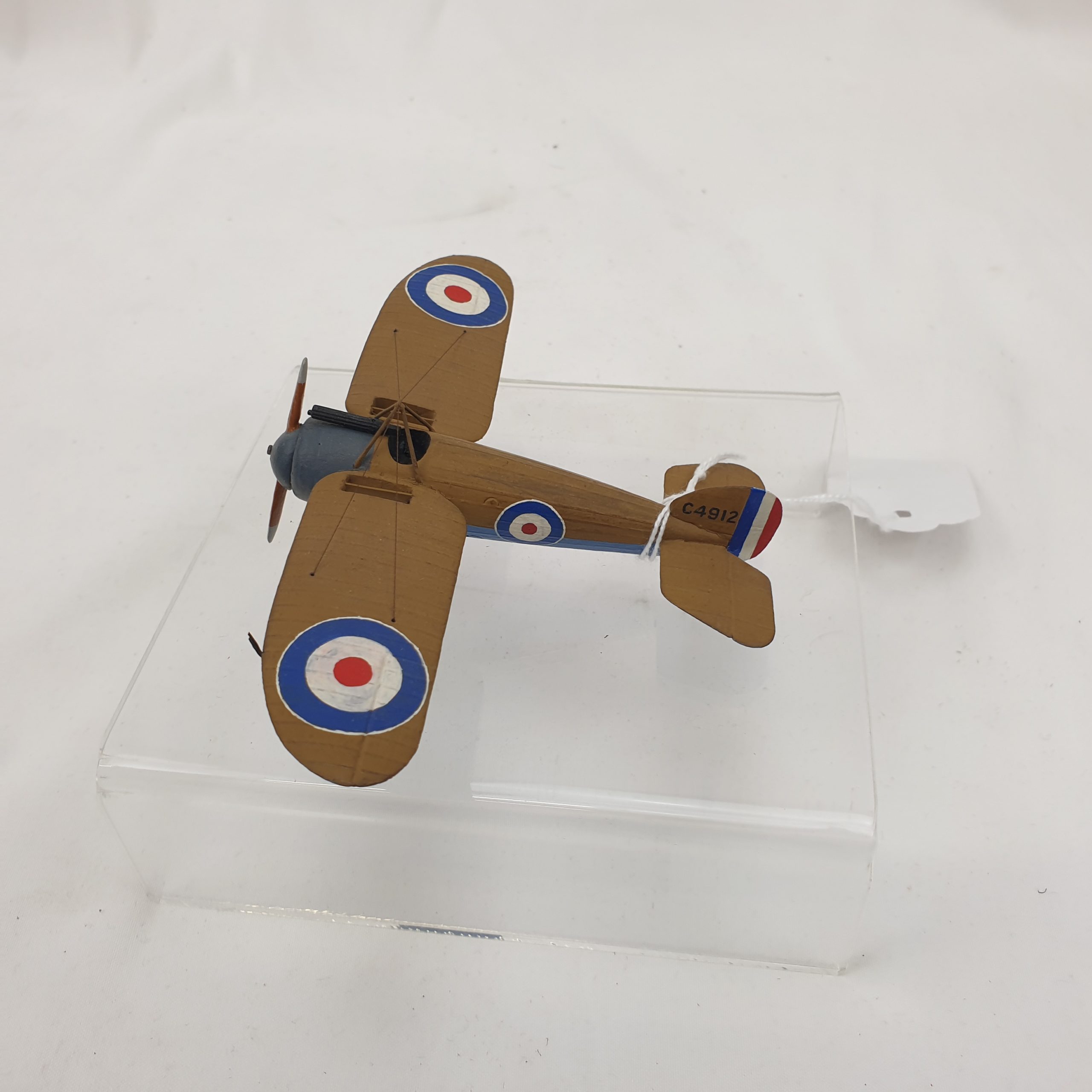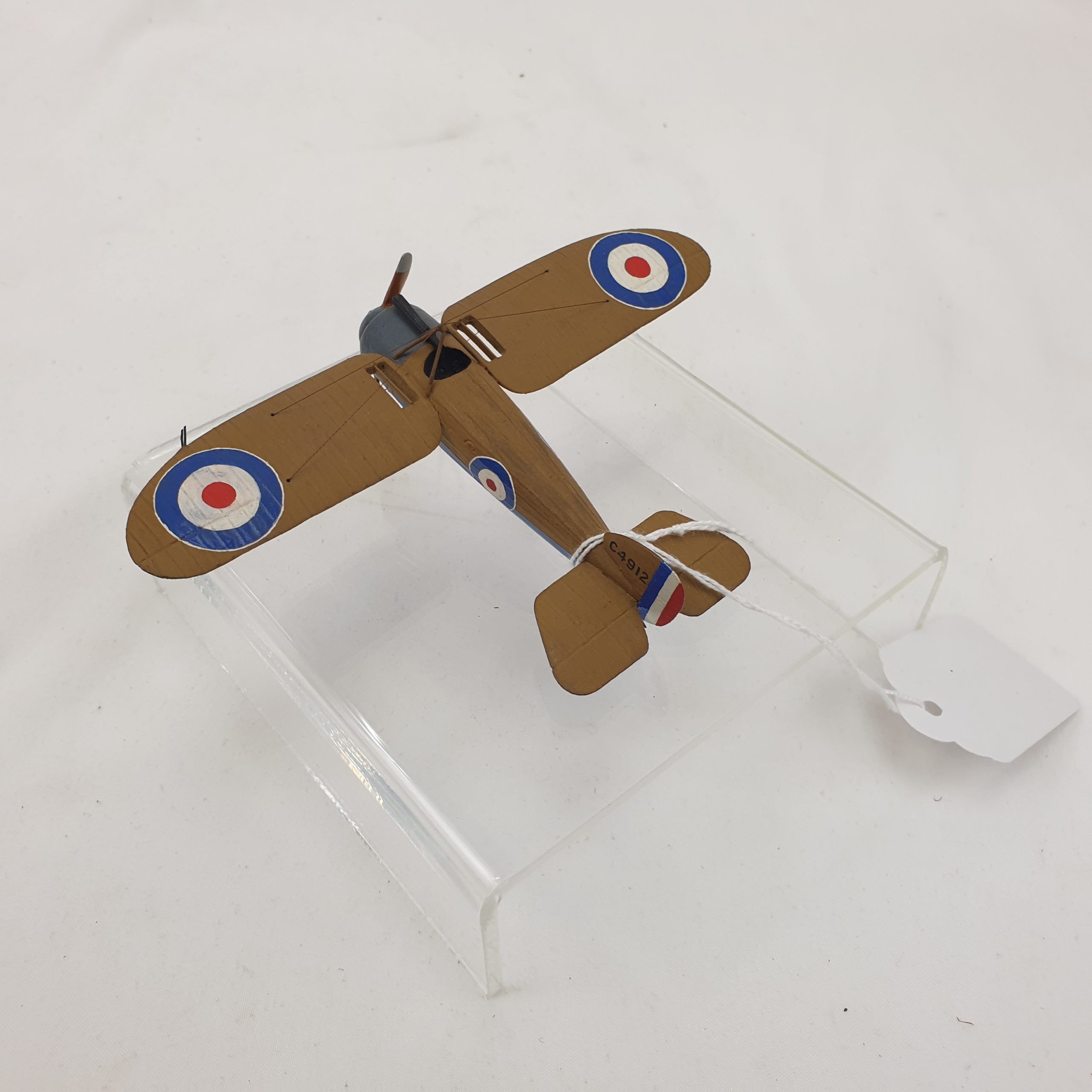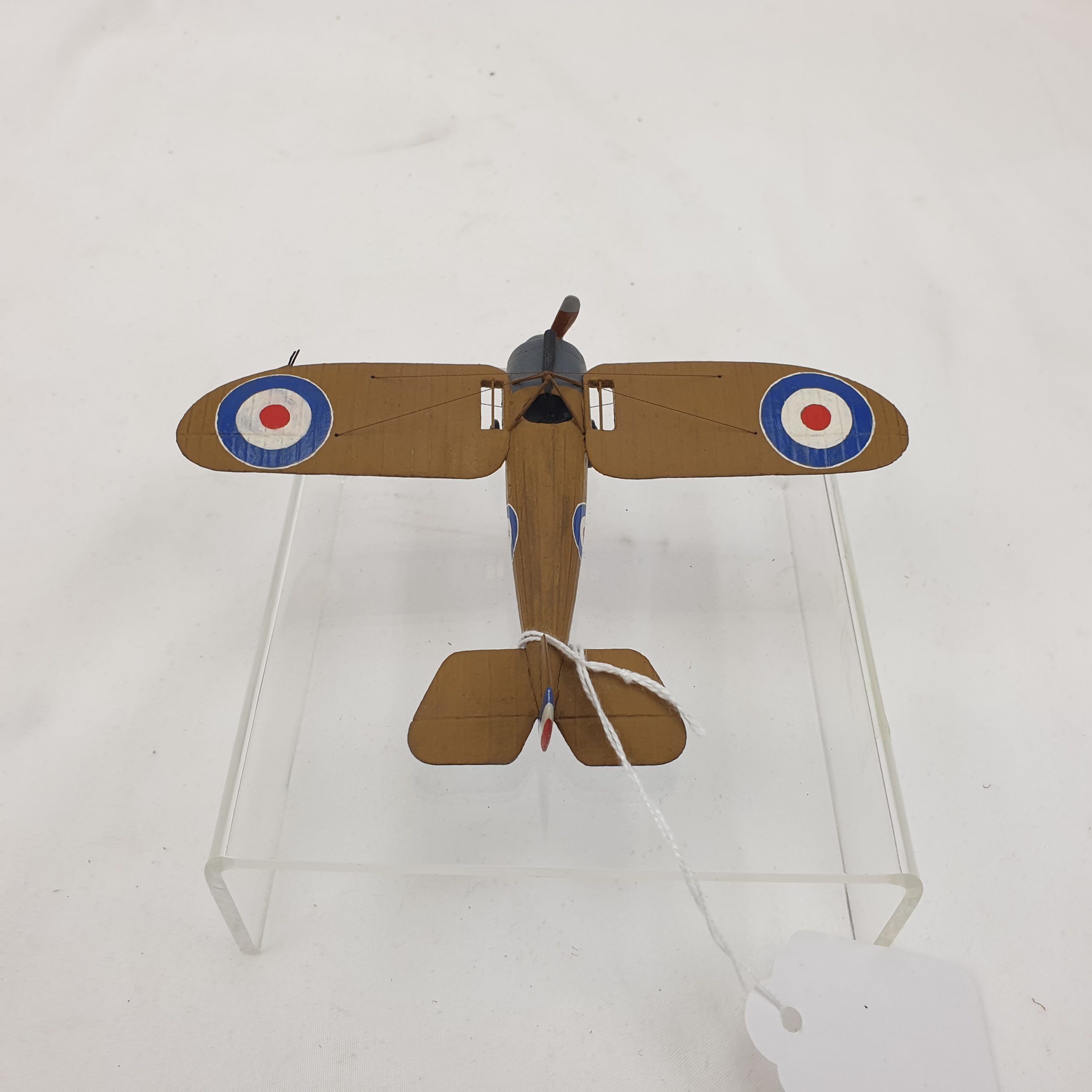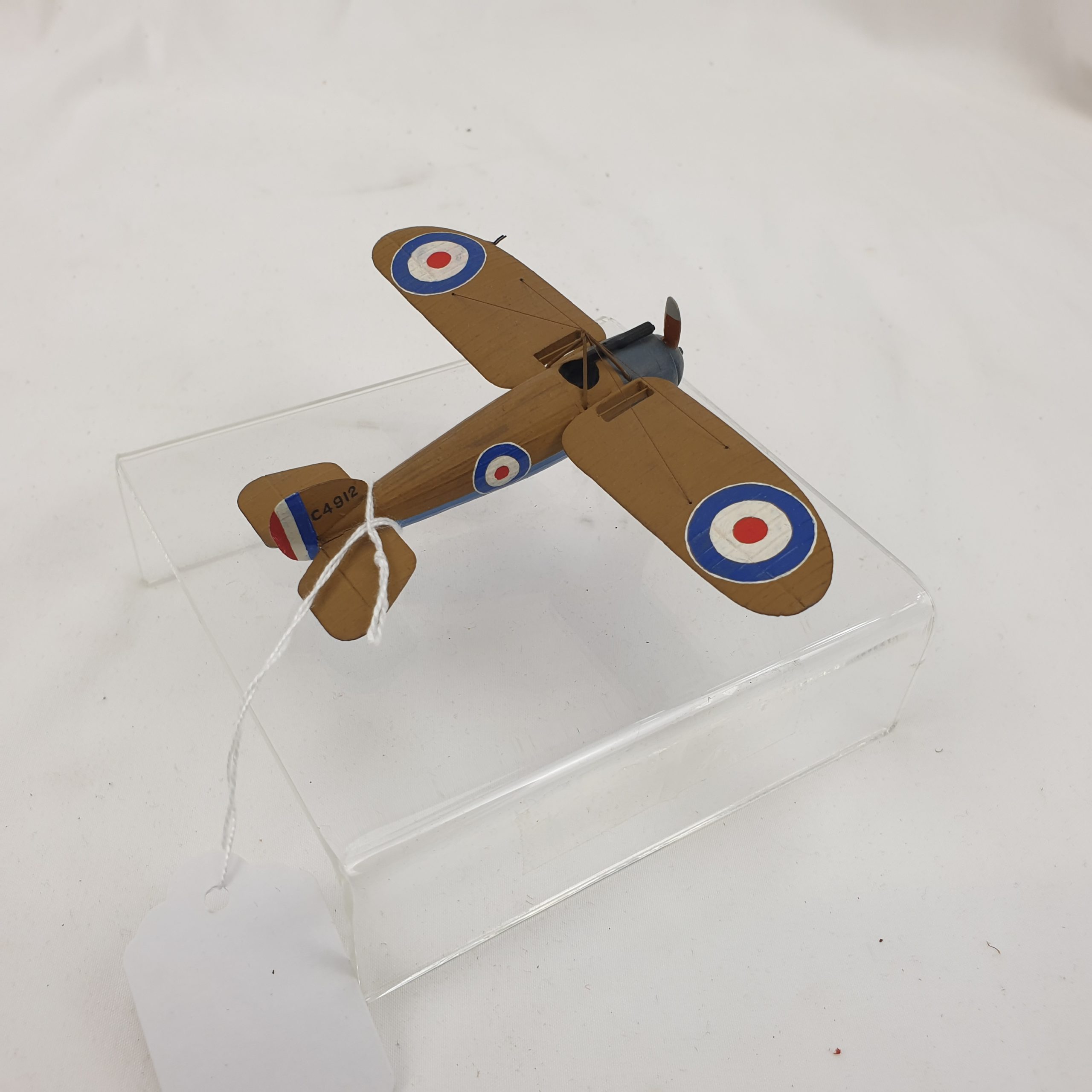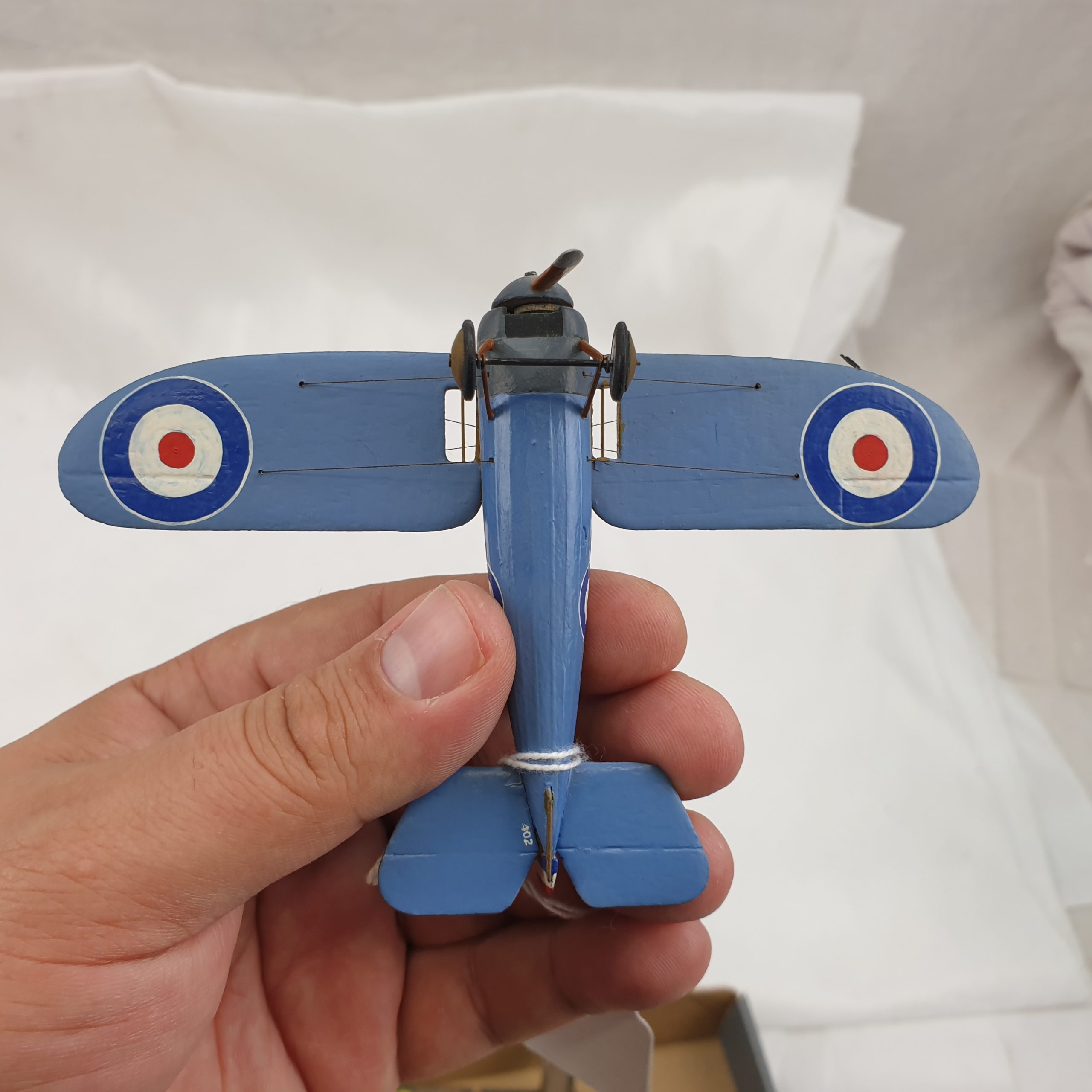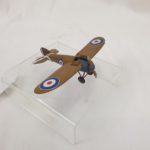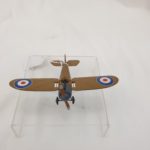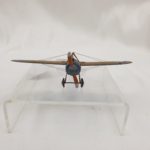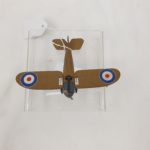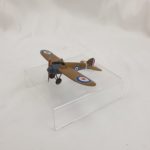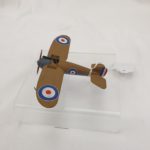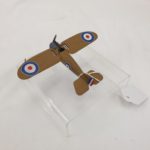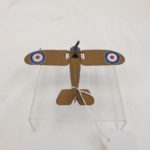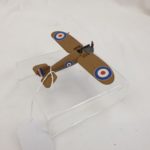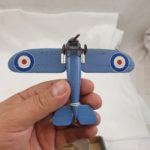~ Model of a British WW1 Bristol M.1 Monoplane Scout ~
The Bristol M.1 Monoplane Scout was a British fighter aircraft used during World War I. It was one of the earliest successful monoplane fighter designs and played a significant role in the early development of military aviation. Here is a brief history of the Bristol M.1 Monoplane Scout:
Development:
Origins: The Bristol M.1 was designed by the British engineer Frank Barnwell, who served as the chief designer for the Bristol Aeroplane Company. It was developed in response to the growing interest in monoplane fighter aircraft designs.
Design: The Bristol M.1 was a single-seat monoplane with a fabric-covered wooden frame. It featured a streamlined, aerodynamic design for its time and had a distinctive gull-wing configuration. The aircraft was powered by a variety of engines, including the Le Rhône rotary engine and the Gnome Monosoupape rotary engine.
Performance:
Speed and Maneuverability: The Bristol M.1 was known for its speed and maneuverability, which made it a competitive fighter aircraft. It had a top speed of around 120 mph (193 km/h), which was impressive for its era.
Armament: The standard armament for the Bristol M.1 included a single synchronized 7.7mm Lewis machine gun, which was mounted on the upper wing and fired through the propeller arc.
Operational Service:
Role: The Bristol M.1 served as a fighter aircraft, engaging in air-to-air combat with enemy aircraft. It was used by the Royal Flying Corps (RFC) and later the Royal Air Force (RAF) during World War I.
Combat Record: The aircraft had a limited production run, and not many Bristol M.1 aircraft were built. However, it was regarded as a capable fighter and was flown by some notable pilots, including Captain Arthur C. Lewis, who achieved several victories while flying the Bristol M.1.
Post-War Service:
After World War I, the Bristol M.1 was retired from frontline service, as military aviation technology advanced rapidly. Some examples of the aircraft were sold to civilian owners and used for various purposes, including air racing and aerobatics.
Legacy:
The Bristol M.1 Monoplane Scout is remembered as one of the pioneering monoplane fighter aircraft of its time. It demonstrated the potential of monoplanes in military aviation and influenced future fighter aircraft designs. While it had a relatively short operational history, it played a role in the early development of fighter aviation concepts that would become more prevalent in the years to come.
~ Dimensions ~
The wingspan is 13.5 cm and the overall length is 9 cm.

